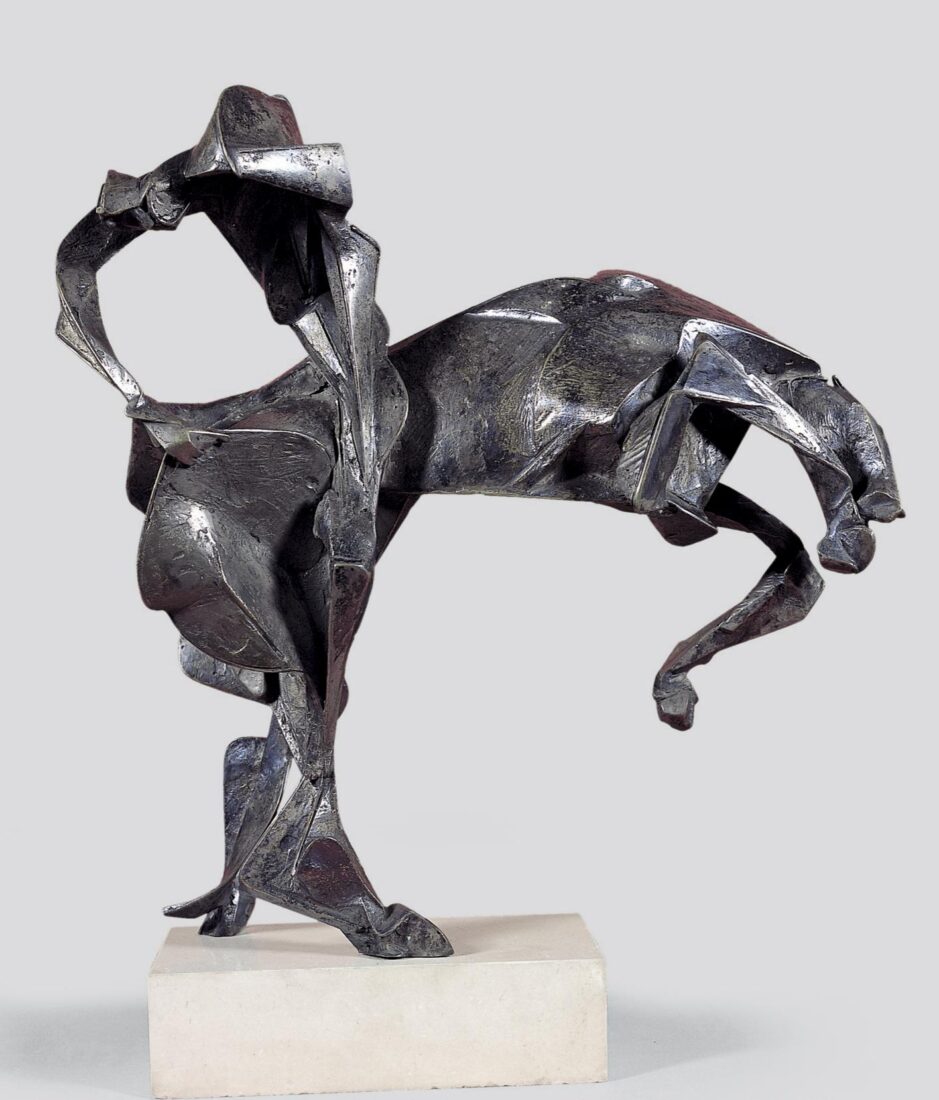We use cookies to make our site work properly, to personalize content and ads, to provide social media features and to analyze our traffic. We also share information about how you use our site with our social media, advertising and analytics partners. Read the Cookies Policy.

Bucephalus, 1973
Bronze, 40 x 35 x 13 cm
Donated by the Ministry of Culture and Science
Manolis Tzombanakis focused on the human figure right from the start of his career. At the same time, he preferred to express himself through representation, but with a non-figurative bent, forming his own personal style from early on. His subjects, taken from everyday life, history or myth, often have an allegorical content or constitute a means of protest on a social or political level.
The compositions with horses or mounted figures, to which “Bucephalus” belongs, occupied him from 1972 to 1979 and despite the fact they can be connected to Greek tradition, in reality they were inspired by the Uprising at the National Technical University of Athens in 1973, against the dictatorship. Tzombanakis wanted to express the burden this dramatic event in recent Greek history placed on him as well as his protest against tyranny of any kind by using symbolic elements from other periods, but with clear allusions. “Bucephalus”, the unruly horse of Alexander the Great that only he managed to tame, is built of geometric volumes and is rendered in an intense and daring movement, expressing the momentary, an element which characterizes the artist’s compositions during that period, and echoes the dynamic movement hidden in the works of the Futurists and especially those by Umberto Boccioni.

